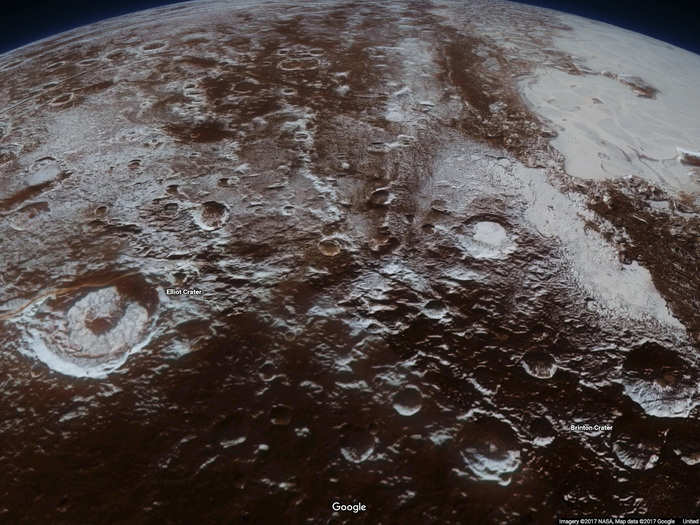
On the opposite side of the world is a big, fuzzy patch — and an exciting new space mission waiting to happen.

Until July 2015, no one knew what Pluto actually looked like. But the New Horizons mission changed all of that with a high-speed flyby — and discovered the distant, icy world even has an ocean hiding below its surface.

Researchers suspect they're salts left by melted ice. There's also a pyramid-shaped feature on the world.

This dwarf planet is the largest object in the Asteroid Belt (though you've probably never heard of it), and an exciting destination for NASA's Dawn mission.

That warm, salty water indicates the moon has an ocean that might be habitable to alien life.

This ice ball that orbits Saturn looks unassuming, but it is one of the most exciting destinations in the solar system right now.

The canyons are the deepest in the solar system. And if Elon Musk and SpaceX have their way, we may someday be able to explore them for real.

Peppered with volcanoes, deep canyons, and robotic probes, the red planet is easily the most fun to explore in Google Maps.


Striping is seen on many of the worlds in Google Maps because it layers the highest-resolution imagery available from NASA, ESA, and other sources over lower-resolution images.


The device collects astronaut urine, sweat, and breath, then recycles 93% of it into fresh drinking water.

Google Maps starts you out inside the Cupola module, a multi-pane window that looks down on Earth. Make sure to spin around and click Node 3: the home of NASA's famous Waste and Hygiene Compartment (a toilet).
 Amid heatwave, Delhi's power demand soars to May's highest ever at 7,572 MW
Amid heatwave, Delhi's power demand soars to May's highest ever at 7,572 MW
 84% of Indian small businesses anticipate robust growth in 2024: CPA Australia survey
84% of Indian small businesses anticipate robust growth in 2024: CPA Australia survey
 Go Digit IPO allotment – How to check allotment, GMP, listing date and more
Go Digit IPO allotment – How to check allotment, GMP, listing date and more

Copyright © 2024. Times Internet Limited. All rights reserved.For reprint rights. Times Syndication Service.